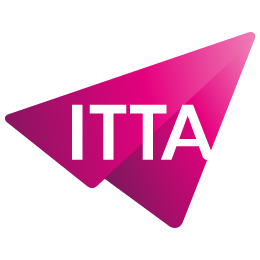Home > Trainings > Office Automation > Office Automation Certifications > ICDL BASE – Computer Essentials – BM1
The ECDL BASE – Essential Computer Skills – BM1 course provides a clear and structured understanding of fundamental computer concepts. It covers the key skills needed to use a computer, manage files, navigate networks, and ensure data security. This training is an essential first step for anyone who wants to master the fundamentals of digital technology in their daily life.
Through this ECDL training, participants discover how computers and peripherals work, learn to handle operating systems, and perform essential system configurations. The course also focuses on effective file management and understanding commonly used software. The goal is to develop the right habits for working efficiently and safely on any workstation.
This program also prepares learners for the ECDL BASE certification, internationally recognized as proof of essential IT and office productivity skills.
Computers and Devices
Module 1: ICT
Module 2: Hardware
Module 3: Software and Licensing
Module 4: Start Up, Shut Down
Desktop, Icons, Settings
Module 1: Desktop and Icons
Module 2: Using Windows
Module 3: Tools and Settings
Outputs
Module 1: Working with Text
Module 2: Printing
File Management
Module 1: Introducing Files and Folders
Module 2: Organising Files and Folders
Module 3: Storage and Compression
Networks
Module 1: Network Concepts
Module 2: Network Access
Security and Well-Being
Module 1: Protecting Data and Devices
Module 2: Malware
Module 3: Health and Green IT
In a world where technology plays a central role, understanding how a computer works has become essential. The ECDL BASE training helps demystify computing and grasp its fundamental principles. It provides a clear understanding of the role of hardware and software components, as well as file and network management. This approach enables learners to navigate the digital environment confidently, both at work and at home.
This program goes beyond theory. It focuses on building autonomy in the daily use of digital tools. Participants learn to perform key tasks: organizing documents, protecting data, and using essential operating system features. These skills, often underestimated, are at the heart of modern productivity. The ECDL BASE training transforms beginners into independent users who can manage their digital environment efficiently.
Cybersecurity has become a major concern for everyone. Attacks, malware, and data breaches no longer affect only large companies. Every user is exposed. This course teaches the essential principles to protect oneself effectively. It explains how to create strong passwords, identify suspicious messages, and keep software up to date. Participants also learn how regular data backups can prevent critical losses. These simple actions quickly become essential habits for digital safety.
One of the great strengths of the ECDL BASE training is its ability to provide well-rounded digital literacy. Beyond technical skills, the course introduces key concepts such as networking, connectivity, and ergonomics. Learners discover how computers communicate, how VPNs work, and why maintaining good posture is important. This global understanding helps users interact more effectively with technology, troubleshoot common problems, and adopt a more responsible and sustainable use of digital tools.
Enrolling in the ECDL BASE training is also an investment in professional credibility. The ECDL certification is internationally recognized and serves as tangible proof of solid digital skills. It enhances CVs and improves employability across various sectors. Whether working in administration, communication, management, or education, mastering basic IT skills is now a must. This official recognition helps participants stand out in an increasingly digital job market.
The course also emphasizes environmental responsibility and digital well-being. Participants learn to adopt eco-friendly behaviors such as reducing energy consumption and recycling electronic equipment. Additionally, the training raises awareness about ergonomic practices to protect health at work. These often-overlooked aspects promote a more sustainable and balanced relationship with technology, making this course a true foundation for mindful digital practices.
Designed for both beginners and users wishing to reinforce their skills, this training follows a progressive and practical teaching method. Concepts are explained in simple terms, supported by real-world examples and exercises. Each module provides an immediate understanding of everyday situations. This accessible approach allows learners to gain not only technical knowledge but also a learning methodology for long-term self-improvement. The ultimate goal is to build genuine confidence in using digital tools.
In an increasingly connected world, knowing how to use a computer is not enough. One must understand how it works, how to secure data, and how to use it efficiently. The ECDL BASE training meets this need by offering comprehensive, hands-on learning. It prepares participants for certification while developing practical skills applicable in daily professional life. By following this program, learners gain digital confidence and open up new opportunities for growth and adaptation to future technologies.
Yes, it is designed for all audiences, even those with no prior experience. Concepts are explained clearly and progressively.
The ECDL certification officially validates essential digital skills. It boosts professional credibility and opens doors to new career opportunities.
Yes, one full module focuses on data security. It covers password management, computer viruses, and best protection practices.
Learners work in Windows environments using Word, Excel, and Outlook. These are the most commonly used business tools, ensuring practical and relevant learning.
It provides the foundation for all future digital learning. Understanding the basics allows participants to progress toward more advanced training in office tools, cybersecurity, or data management.

Nous utilisons des cookies afin de vous garantir une expérience de navigation fluide, agréable et entièrement sécurisée sur notre site. Ces cookies nous permettent d’analyser et d’améliorer nos services en continu, afin de mieux répondre à vos attentes.
Monday to Friday
8:30 AM to 6:00 PM
Tel. 058 307 73 00
ITTA
Route des jeunes 35
1227 Carouge, Suisse
Monday to Friday, from 8:30 am to 06:00 pm.